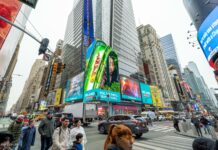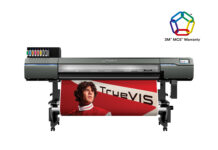Ive been in business thirty years now—and all of it has been spent in Northern Minnesota. It’s true we are in an economic downturn, and that has slowed a lot of my fellow sign shops in the area (as well as us). Last year, we experienced record floods, and the city fathers asked us to shut down our businesses and help sandbag. Like other businesses in the area, we were closed a whole week. It flooded again this year, and once again, things slowed down to accommodate it.
I’m not whining. After years of business, I can tell you that we’re always slow in January and February (recession or not). When it’s twenty-below-zero outside, one really doesn’t want to go out and do calls.
Twenty-five years ago, during the days of hand lettering, I’d take off during these months and go work at a dive resort in the Bahamas or Belize or the Florida Keys. One of my favorite haunts in the winter months was California. I’d go out there and paint signs and stripe cars in my brother’s garage in Sacramento; then he and I would go diving off the Channel Islands on weekends.
Back in those days, I had my customers trained. They would ask when I was leaving for the warmer climates, so they could get their work done before I left. Some were envious of my nomadic lifestyle and would wait for me to come back around March 1, so that I could tell them of my adventures. (Note: As I matured and started a family, I wasn’t able to do that as often, so I’d do winter things with my kids, such as snowmobiling and ice diving.)
During the slow winter months, I’d also learn something new. One year I tried out airbrushing, the next year I learned gold leaf, then split-blended shades, etc. I learned new stuff every chance I had.
During my lucid downtime with cancer this past year, I’d think of things I wanted to do to improve the look of the shop. The first thing I did was study LEDs.
When I got some of my energy back, I thought it was time to implement some of my ideas.
I called various manufacturers and played with the samples they sent me (Photo 1). My goal was to highlight the sign shop (as it gets dark fast in the winters here), so I studied various edge-lighting installations. I thought if it’s good enough for the big buildings in the big cities, it’s good enough for me. Of course, I don’t have the kind of budget they do, but I got the same results.
I went online and found Birddog Distributing, Inc. (www.birddogdistributing.com) offering a special on LED rope lights, so I bought a 150-foot roll of green and track lighting to go with it. The track lighting is clear or white and identical to the edge cap that Laminators, Inc. (www.omegapanel.com) uses on its panels.
I chose the rope light, as it was inexpensive and didn’t need a ballast or transformer. It also came with its own cord with a plug on the end, so all I needed was the 110V outlet that we already had in place (Photo 2). I then tapped into it with a photo cell.
I started by cutting off a one-foot piece of track lighting and dissecting it (Photo 3). I found that the color was a covering in green and is separate of the center core or raceway that the LEDs lay in, which is clear.
I then attempted to put together two pieces with the connector. I soon learned that the connector pins aren’t real durable; in fact, they break easily when pushing them into the wires embedded in the raceway. So I took an old compass lying around the shop and pushed the sharp end into the wires. I then pushed the connector pins into the wires with ease (Photo 4). I experimented with a scratch awl, a compass, and the pins on the end of my volt meter, and all worked really well.
For the installation, I snapped a line down the gutter, put double-sided tape on the track, stuck them down, and put small roundheaded, low-profile screws into each six-foot-long piece. I then pressed the rope light into the track (Photo 5).
To connect the rope lighting to the face of the building, I installed a T connector (Photo 6). I installed 146 linear feet of track and rope light in two hours.
The whole project cost me $220. We’ve even installed similar lighting for two other businesses, and it’s fun to do. The end-result has generated many comments. It looks good at night (Photo 7), and as you should know by now, I like to light things up. b










